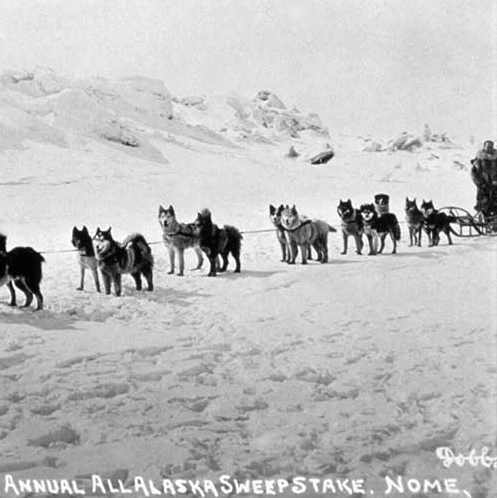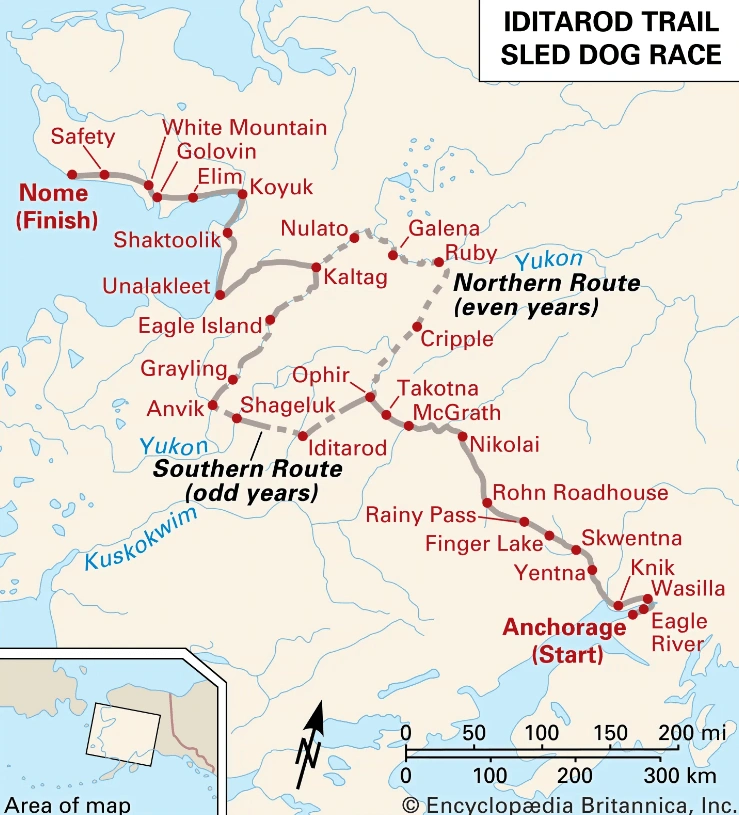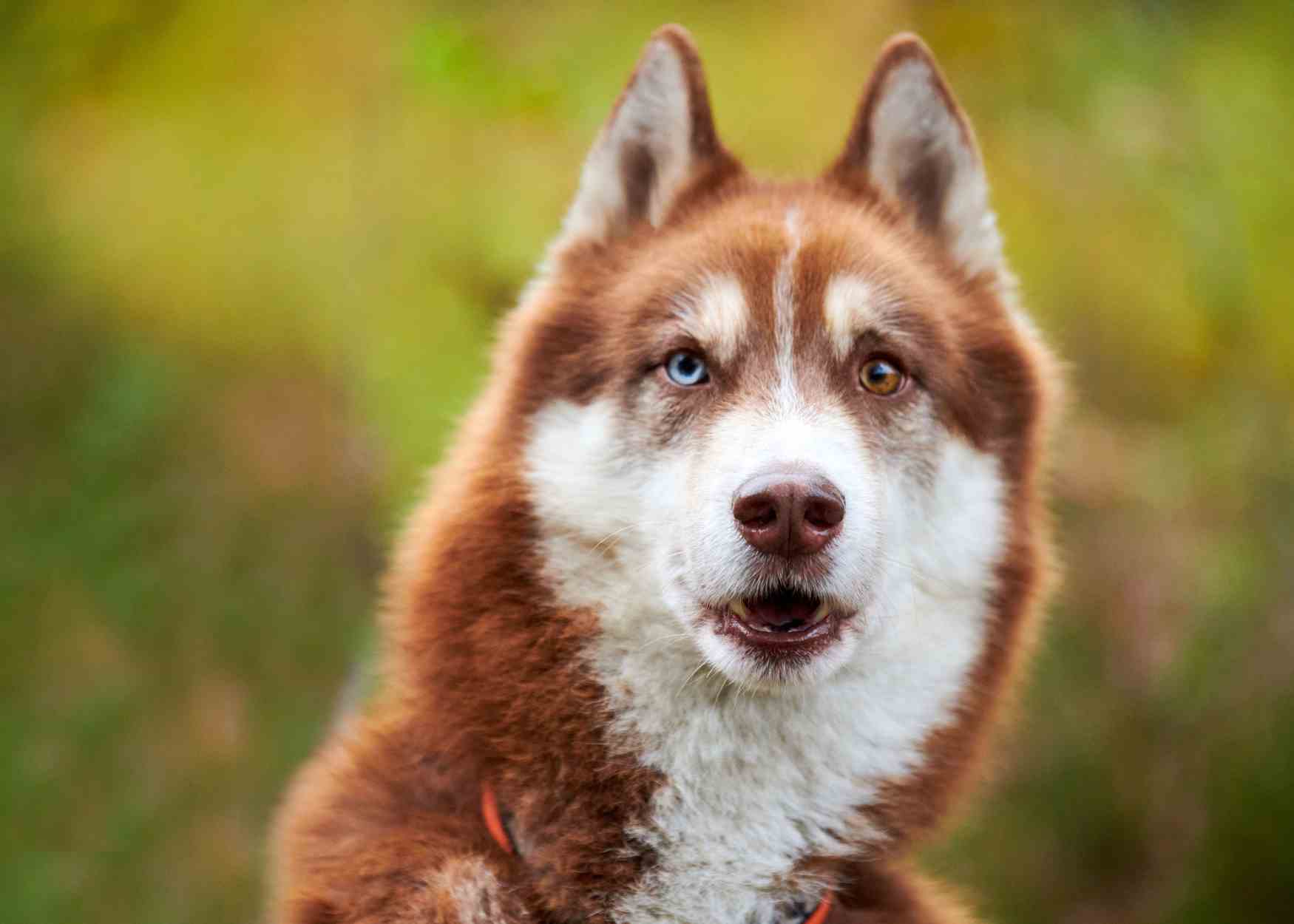Mush! Mush!”
In the heart of Alaska's snowy wilderness where icy winds howl and frost clings to every surface, a remarkable spectacle unfolds each year. The Iditarod Trail Sled Dog Race, also called the "Last Great Race on Earth," is a competition unlike any other in the world where human and dog teams sled from the start in Anchorage in a race to the finish line in Nome, Alaska, over 1,000 miles across treacherous winter terrain. Mushers and their teams fight for who can cover the race in the shortest time without the aid of help. The winning team is determined by the first dog’s nose to cross the finish line. This year’s race was held March 3-16, 2024.
Dallas Seavey, the 2024 winner of the Iditarod Trail Sled Dog Race, completed the course at 5:16 on March 12 after 9 days, 2 hours, 16 minutes, and 8 seconds of racing and won just over $55,000 for first place. The seasoned musher who was the youngest person to win an Iditarod in 2012 clinched his sixth win despite setbacks, breaking records by showcasing his skill, strategic decisions, and determination to work flawlessly with his team to propel him to victory.
In addition to first-place accolades, around 20 special Iditarod awards are given for various reasons, including gifts such as a perpetual trophy made of Alaskan birch and marble, hand-crafted items from the Nikolai community, new cell phones, gourmet dinners, and cash prizes. One consolation prize is the Red Lantern Award given to the person who is the last to cross the finish line. This year, rookie Jeff Reid took 12 days, 11 hours, 22 minutes, and 1 second to arrive in Nome at 2:22 am on March 16.
The Iditarod saw fierce competition among the top teams with several contenders vying for the coveted title of Iditarod champion. Alongside the adrenaline-fueled action, the Iditarod also showcased heartwarming moments of teamwork, perseverance, and the unbreakable bond between mushers and their dogs.
The 2024 Iditarod marked the 50th running of the legendary race, commemorating half a century of tradition, adventure, and camaraderie among mushers, their teams, and the greater community. The Iditarod Trail Sled Dog Race traces its origins to the historic Iditarod National Historic Trail in Alaska initially used for transporting mail and supplies during the gold rush era.
Sled dog racing is not always run for bragging rights. The Nome Serum Run of 1925 was a heroic effort to deliver life-saving diphtheria antitoxin to the isolated town of Nome, Alaska, during a deadly outbreak. Led by mushers and their sled dog teams, the relay covered over 600 miles of treacherous terrain in freezing temperatures, with teams braving blizzards and harsh conditions to deliver the serum in record time. The successful delivery of the serum helped prevent a widespread epidemic and cemented the crucial role of sled dogs in Alaskan history.
In 1973, the first Iditarod race was organized to commemorate the role of sled dogs in Alaskan history. The Iditarod brings together communities along the race route, fostering a sense of unity and pride as locals cheer on mushers and offer hospitality and support at checkpoints along the way. Experienced mushers share their wisdom and insights with newcomers, offering valuable advice and support to help them navigate the challenges of the trail.
Let's dive into the diverse array of canine athletes that make the Iditarod an unparalleled display of teamwork and determination. If you don’t know “mush” about it, discover the 2024 Iditarod Trail Sled Dog Race, what qualities make a great sled dog, and sled dog breeds suited for the grueling race.
Fun Facts about the 2024 Iditarod Trail Sled Dog Race
These numbers and facts at a glance give a solid overview and snapshot of the Iditarod Trail Sled Dog Race. You may have known some of these, but most could be something new to you.
- If you wonder why people yell, “Mush! Mush!” it has a deep-rooted history rather than just a silly saying. The word “marche” means to walk or move in French, and “mush” is a phrase used to tell a team of dogs to begin moving. Today, people who direct the sleds are called dog drivers although musher is also commonly used.
- The Iditarod course for 2024 is comprised of 2 courses, the Southern Route (odd years) and the Northern Route (even years). The Northern Route course this year was just over 1150 miles running from Anchorage to Nome.
- The Iditarod teams encountered temperatures as cold as -40°F with drastic temperature changes. Teams have to be prepared for awful weather conditions.
- The Iditarod course terrain features “jagged mountain ranges, frozen river, dense forest, desolate tundra and miles of windswept coast.”
- Thirty-eight mushers and around 608 sled dogs made the 1,000+ mile trek to Nome with 10-12 dogs per team. Most of this year’s mushers were from Alaska with 27 signed up to race for their home state. Sixteen rookie racers and 4 international racers joined the competition’s roster.
- Nine racing teams dropped out of the competition for various reasons, and some teams incurred penalties and other setbacks.
Qualities of Great Sled Dogs
Not every dog that loves snow is cut out to be a sled dog racing in the Iditarod. Regardless of size or breed, here are qualities that all sled dogs possess.
The protective double-layered coat of a sled dog
All sled dog breeds have developed a remarkable adaptation: A warm, insulated weatherproof double coat. This feature is crucial for their survival and comfort in harsh winter conditions. The outer layer of their coat is dense and long, serving as a nearly waterproof barrier against the elements. The longer hairs provide added coverage and insulation, helping to retain body heat more effectively. It shields the dog from rain, snow, and wind, helping to maintain body warmth in Arctic conditions.
Beneath this protective outer layer lies a thick undercoat made of finer, shorter, loftier fur. This undercoat acts as a natural insulator, trapping heat close to the dog's body and providing an additional layer of warmth. It is particularly effective in safeguarding against frostbite and hypothermia, common risks in cold climates.
When considering coat types of hard-working sled dogs, long-haired varieties are favored over short coats for their superior insulation properties. This is essential for sled dogs living and working in icy temperatures, ensuring they stay comfortable and healthy even in the most frigid conditions.
Teamwork doesn’t seem work
To make the dream work, you need teamwork between mushers and their dogs as well as inter-canine camaraderie. The establishment of mutual trust is paramount for effective communication and cooperation. In the challenging terrain of the Iditarod, mushers depend on their canine companions to alert them to potential dangers and execute commands with precision.
Physically fit for the job
Sled dogs are known for their strength, endurance, stamina, and resilience. Their body structure is perfectly tailored for the demands of sled dog racing. Sled dog breeds have well-developed muscles, particularly in their shoulders, chest, and hindquarters. These muscles provide the power needed to pull heavy sleds through snow and ice for long distances without tiring easily. Their strong legs and large, well-padded paws provide traction and stability on slippery surfaces. This helps sled dogs easily navigate challenging terrain, whether deep snow or icy trails.
Even the way sled dogs move their bodies helps maintain stamina. Sled dog breeds are agile and nimble, able to maneuver through tight turns and obstacles with ease and respond to their dog driver’s commands. They have a unique gait known as the "sled dog trot." This efficient movement allows them to cover ground quickly while conserving energy, making them well-suited for long-distance travel.
The Best Sled Dog Breeds Racing in the Iditarod
At the heart of this grueling test of endurance are the true heroes of the trail - the sled dogs. But which sled dog breeds power through the unrelenting terrain, pulling their mushers toward victory?
The Iditarod Race only allows dogs of “Northern” origin, including the Siberian Husky, Alaskan Malamute, Alaskan Husky, and certain mixed breeds.
@vohit4rohit Dogsledding in Lapland. Six Siberian huskies pulled a sled for two people. Two female huskies in the front and one in the middle led the way, while three males brought huge power by chasing them. There are 166 huskies in this kennel, most of the smaller Siberian variety. In Sweden 2016 we had solo sleds pulled by three Alaskan huskies, much larger and quicker. But the personality and agility of the Siberians was something to behold. #siberianhusky #lapland #dogsledding #finlan ♬ original sound - Rohit Thawani
Siberian Husky
As one of the most famous sled dog breeds, Siberian Huskies display endurance, versatility, teamwork, robustness, and stamina. Siberian Huskies originated in the remote reaches of Siberia, Russia, bred by the indigenous Chukchi people starting around 3,000 years ago. They developed a dog to aid in hauling heavy loads across the challenging Arctic terrain with efficiency.
As pets, Siberian Huskies are tireless companions ready to join you on adventures and do best with an active person or family that has time to devote to their needs. They can play for hours thanks to their stamina, and they’ll make you laugh with their funny vocalizations.Siberian Huskies form strong bonds with their owners, a trait that serves them well as team members in a sled dog race.
Alaskan Malamute
As one of the oldest sled dog breeds, the Alaskan Malamute is a powerhouse of strength and endurance. They were developed over thousands of years by the Inuit people of Alaska and used for hunting, transportation, and hauling heavy loads over long distances. Alaskan Malamutes are more related to wolves than most domesticated dogs, but they do not have wolf genetics.
Alaskan Malamutes are loyal, smart, hard-working companions and do best with families that love to be outside. Like Huskies, Alaskan Malamutes communicate via yips, howls, growls, grumbles, and other noises their owners learn to interpret. While their intelligence and independent streak may pose training challenges, Alaskan Malamutes excel as family pets when given proper socialization and training efforts.
Alaskan Husky
A versatile and agile breed, the Alaskan Husky is a favorite among mushers for its unmatched speed and endurance. Bred specifically for sled dog racing, these dogs come in a variety of coat colors and sizes, each possessing an innate drive to run and explore the wilderness. Alaskan Huskies have shorter fur than their Siberian Husky relatives. They have a friendly and social nature, making them great companions for active families and other dogs.
Mixed Breeds
In addition to purebred sled dogs, many mushers rely on mixed-breed dogs to round out their teams. These resilient and resourceful dogs often exhibit a blend of traits from various breeds, making them well-suited for the challenges of the Iditarod.
Race to Pawrade For Active Puppies
If you are enamored by the diligence, elegance, and stamina of sled dog breeds, turn to Pawrade. These loyal canine companions boast unparalleled determination, loyalty, strength, and resilience. Find your beloved furever friend when you browse our puppies for sale.



